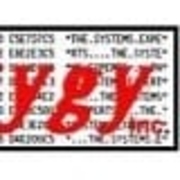Mainframe Testing Tools offer specialized solutions for validating the functionality, security, and performance of applications running on mainframes, ensuring they meet organizational standards.
These tools are essential for enterprises with large-scale mainframe operations, allowing for thorough testing and quality assurance. They help identify issues early, reducing downtime and maintaining high availability of critical systems. Advanced features often include automation capabilities, load testing, and integration with modern development frameworks to streamline workflows.
What key features should you look for?Financial institutions use Mainframe Testing Tools to ensure transaction processing systems remain secure and efficient. Retailers rely on these tools for testing inventory management and point-of-sale systems to prevent downtime during peak shopping periods. Healthcare providers use them to validate patient record systems, safeguarding sensitive information.
Mainframe Testing Tools assist organizations in maintaining robust and efficient mainframe environments, supporting critical business functions with high reliability and performance.
| Product | Market Share (%) |
|---|---|
| BMC AMI DevX | 28.5% |
| IBM File Manager | 15.8% |
| InterTest | 15.1% |
| Other | 40.6% |













With the world driving toward digital transformation, companies need to stay competitive while keeping costs under control. All of this while giving a world-class user experience and beating the competitors to market. This is easier said than done for most organizations, and even more difficult for businesses using mainframes because of outdated processes for testing the systems.
Heavily regulated industries like banking, financial services, insurance, and healthcare still use mainframes. Why? Here are some reasons:
Testing is an essential part of mainframe efficiency. The problem is that today’s business environments move significantly faster than traditional mainframe development and testing can keep up with. That’s because, for the most part, mainframe testing is still performed manually. Therefore, to meet the current demand to deliver higher quality at a rapid speed, mainframe testing needs to adopt test automation.
Now is the time to implement continuous testing on the mainframe so you can shift left, testing earlier and often before sending the application into production, thus ensuring the performance of your applications. A way to do this efficiently is to use mainframe testing tools.
Traditional manual mainframe testing involves testing job batches against the test cases developed. It is usually performed in deployed code. The deployed code is applied and tested using combinations set into an input file. Testers access mainframe applications by using a terminal emulator on a client’s machine. By conducting mainframe testing, you are ensuring that the system or application is ready to market.
The process starts by determining how a specific process will be modified in the release cycle. The testing team receives a document with the requirements and defines how many processes the change will affect. The percentage can usually range between 20 to 25% of the application.
Next, the mainframe application is tested in two general stages:
There are several steps to follow for mainframe testing:
Integrating the right testing tools can save time, prevent human error, and produce faster and more accurate test results than manual testing. Since testers don’t need to spend hours in manual processes, they have time to improve the tests. Therefore, it creates a cycle of test quality improvement.
Some of the benefits of integrating mainframe testing tools are:
The benefits of using test automation are clear. Still, integrating test automation can be a challenge. Choosing the right mainframe testing tools and the right platform is essential for a successful transition.
Some key elements for a mainframe testing tool include: